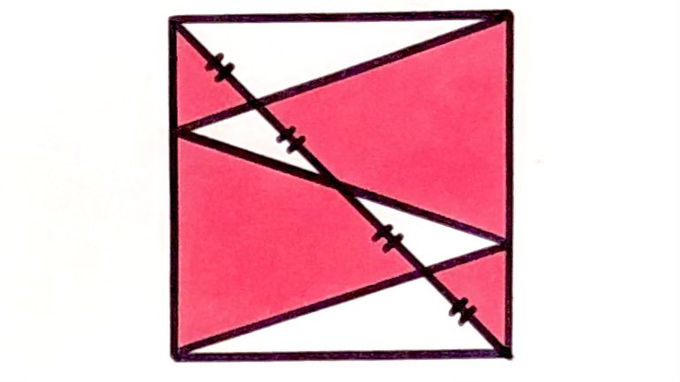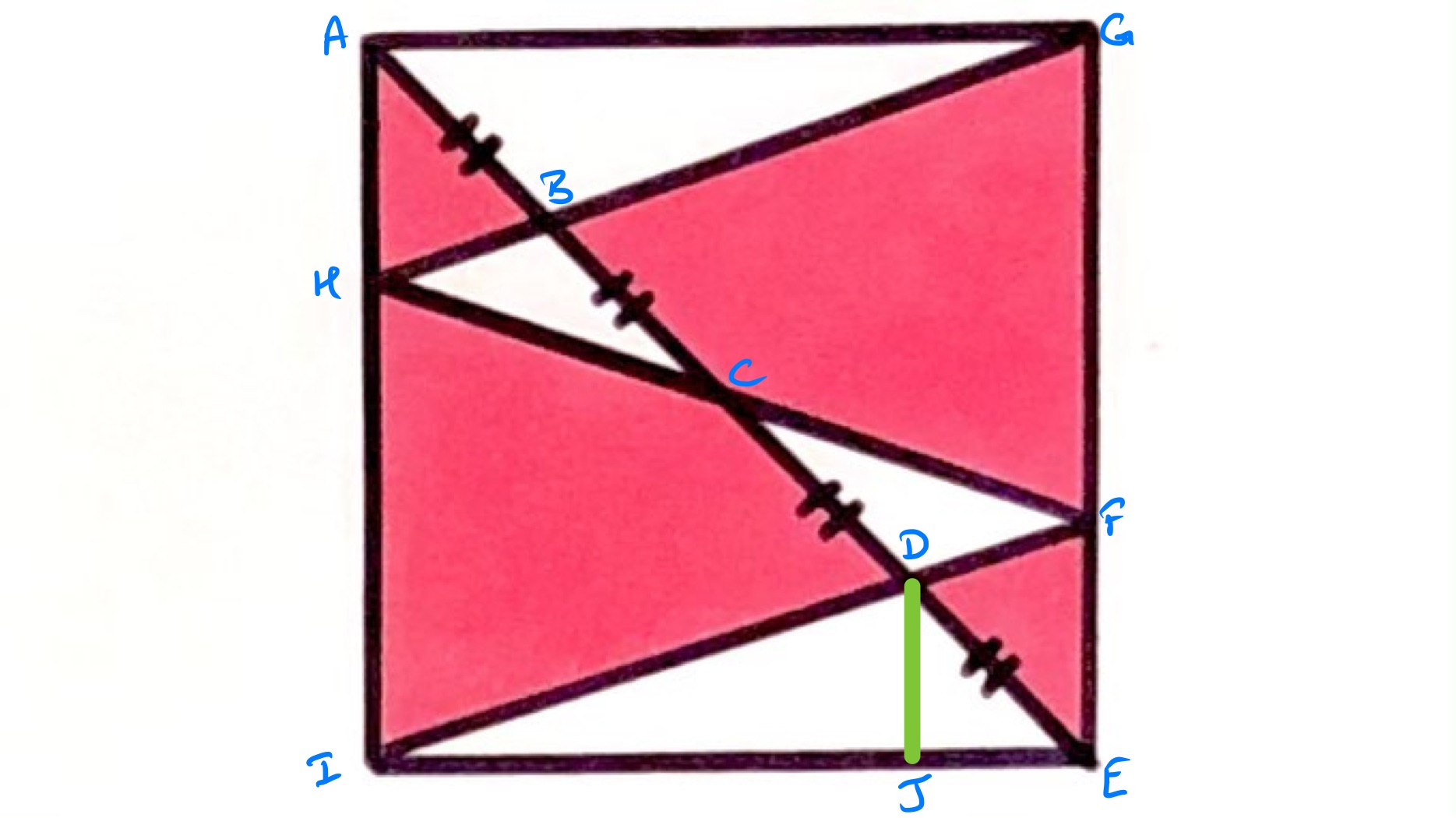Notes
zig-zag inside a square solution
Solution to the Zig-zag Inside a Square Puzzle

What fraction of the square is shaded?
Solution by Area of a Triangle and Similar Triangles

The first observation is that the smaller triangles are equal in area. Specifically, with the points labelled as above, then triangles and have the same area. This can be seen by taking and as the bases with as the highest point of both. From the problem, and have the same length, and then obviously they have the same height above this base. This means that the white area has the same area as of the triangles and . Putting these rectangles together creates a rectangle whose width is the same as the side of the outer square and whose height is , so the key to the problem is finding the length of .
The triangle is similar to the triangle . As is one quarter of the way from to , the height of above is one quarter of the side length of the outer square. It is also one quarter of the way across from , meaning that is three quarters of the way from . So is three times longer than . As this ratio is preserved by similar triangles, the segment is three times longer than . This means that is one third of the height of the square.
The white area is therefore one third of the square, and so the shaded area is two thirds of the square.